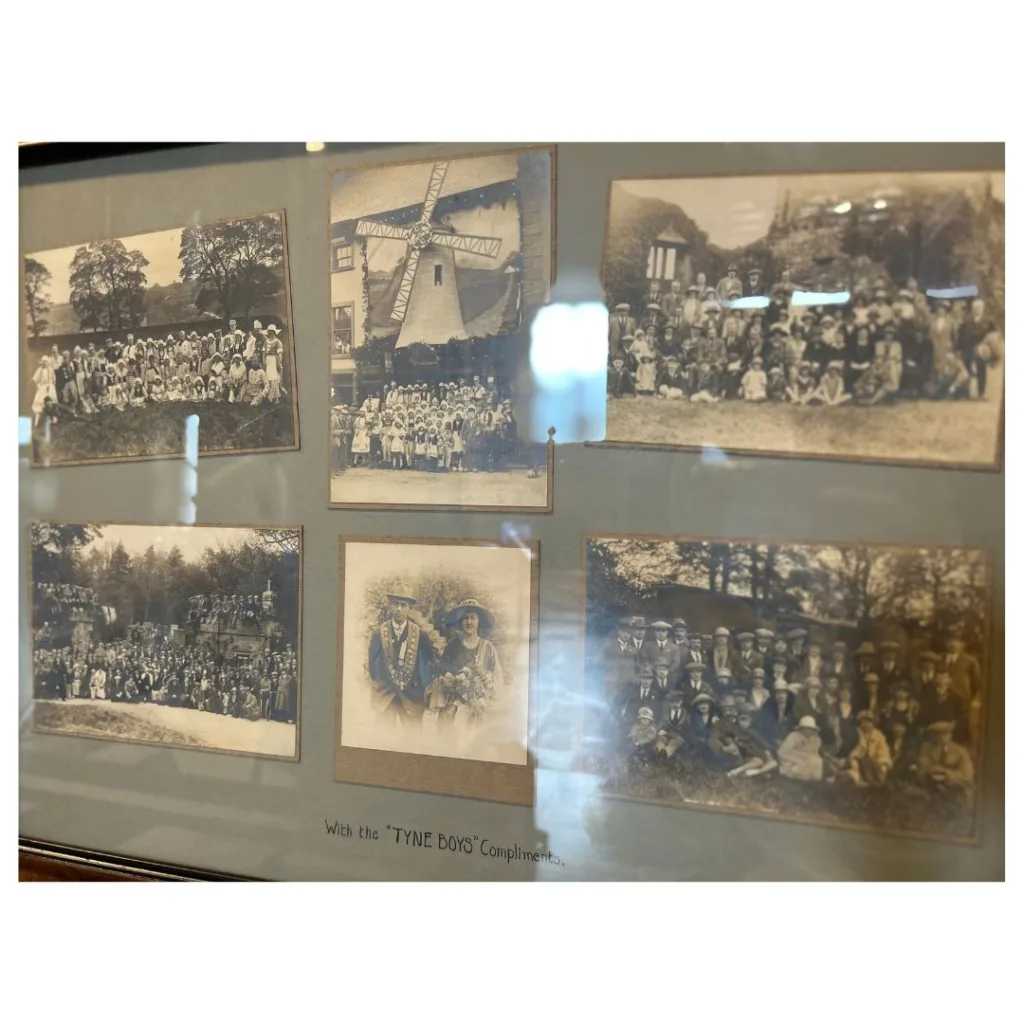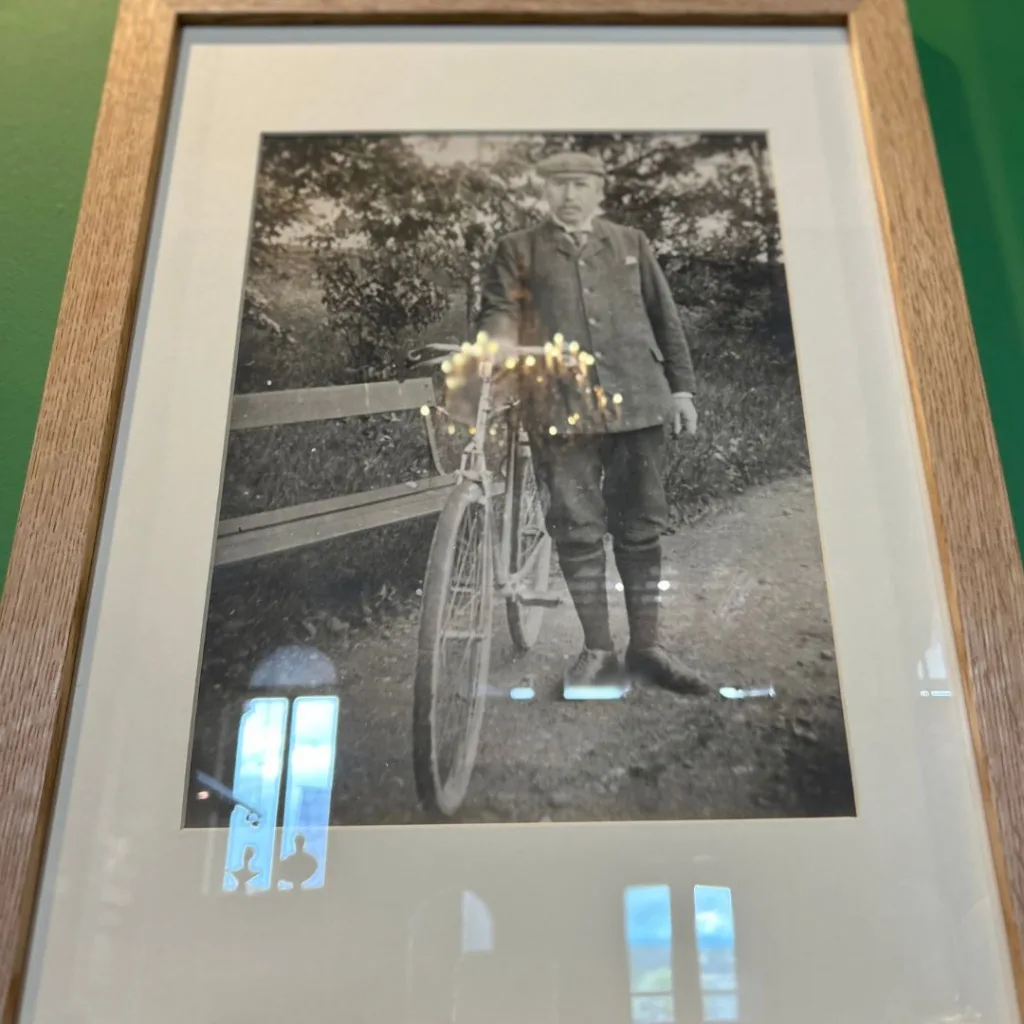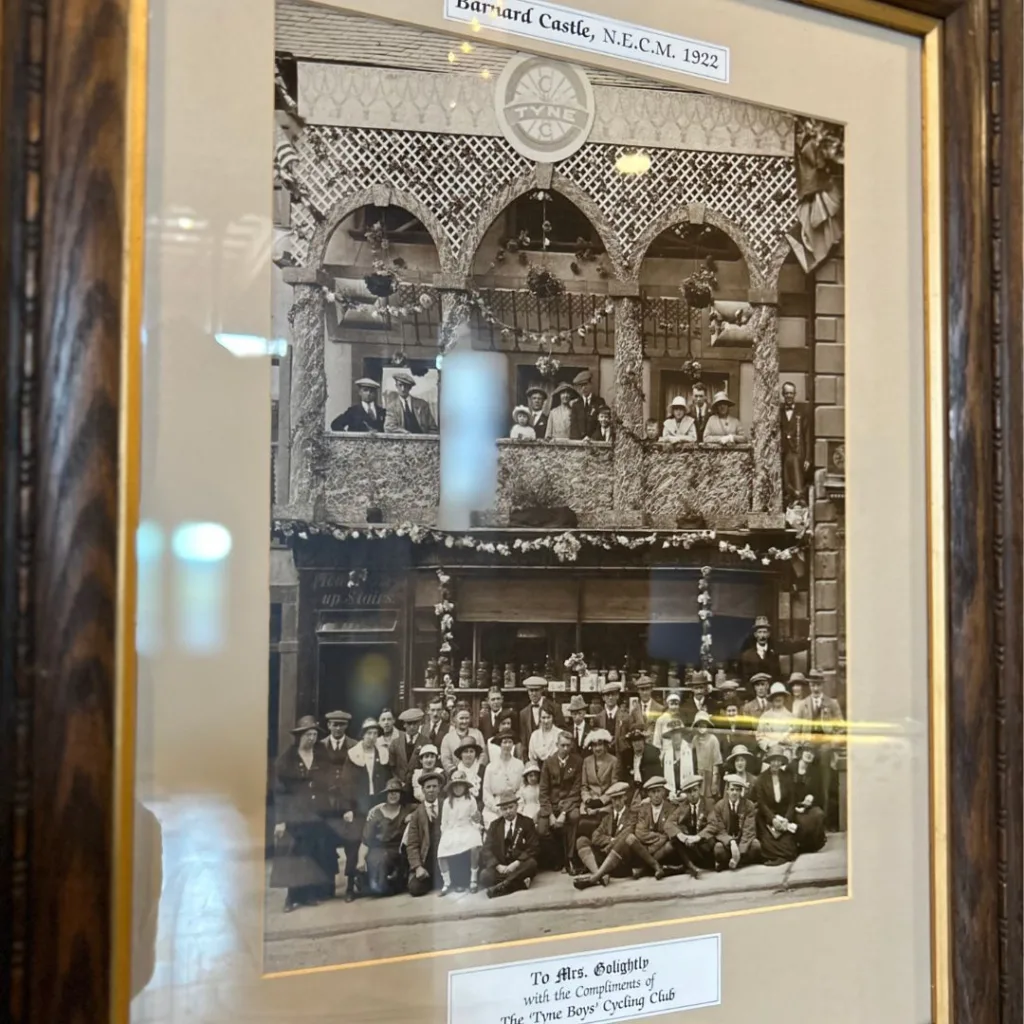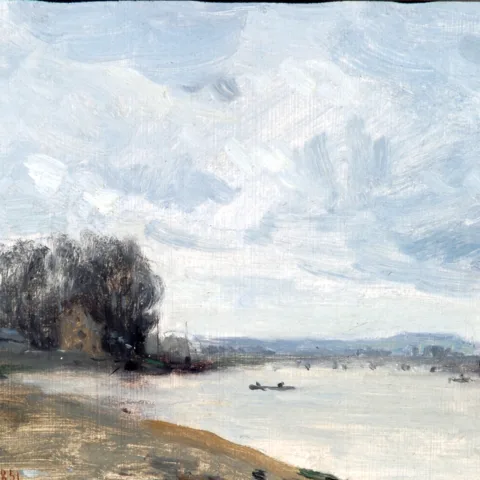The Bowes Museum Blog

July Conversation Wall – Tour de France
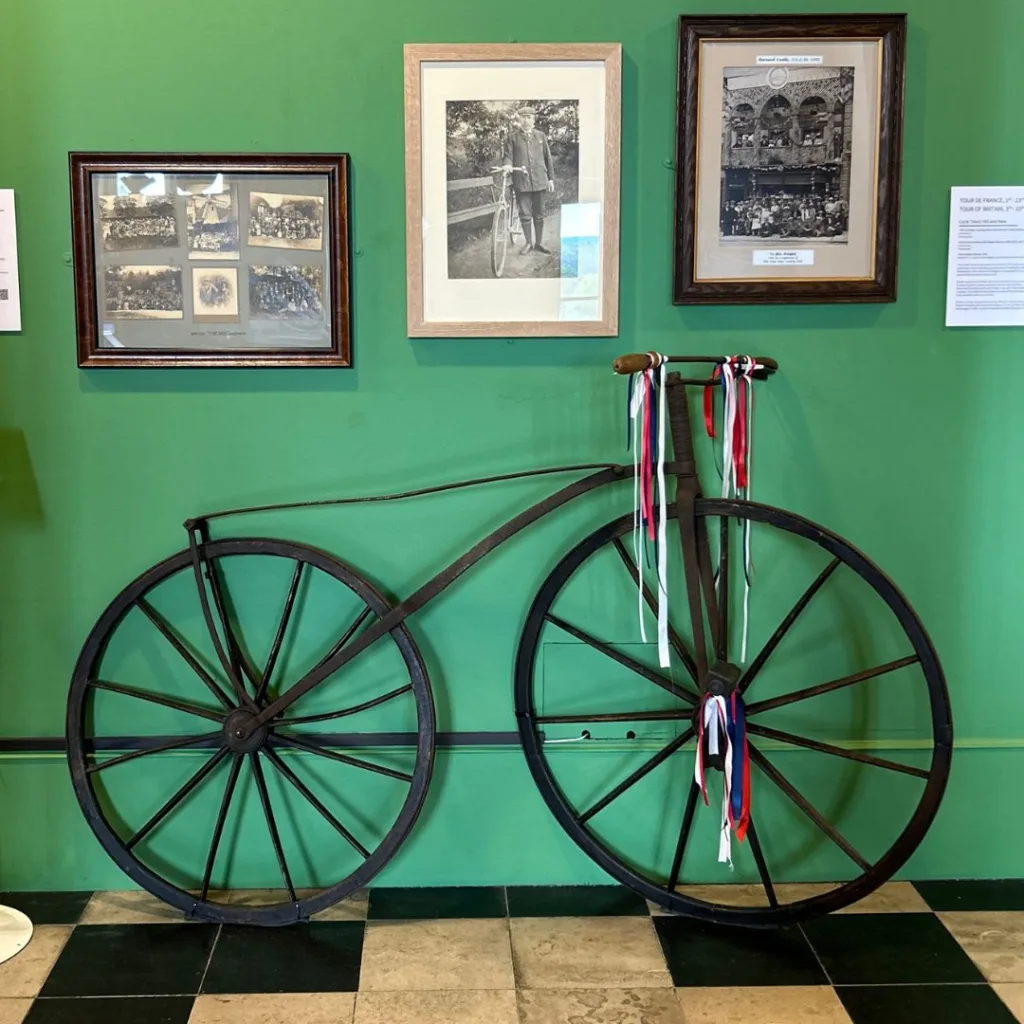
The modern bicycle developed from the early 19th century onwards in Germany as theLaufmaschine (running machine), called in England the Hobby Horse. It was essentially a way of speeding up the process of walking by aiding the pedestrian with two wheels, and feet remained firmly on the ground. By 1861, when this ‘Boneshaker’ was created in Darlington, it was possible to turn the front wheel with raised feet by means of pedals, but the name testifies to the precarious and uncomfortable nature of the process
Modern cycling took off from the late nineteenth century onwards with the development of gears and pneumatic tyres, giving the cyclist both comfort and speed. Groups of ordinary people would tour remote parts of Britain, and meet up at pre-arranged venues. The ‘Tyne Boys’ cycling club used to cycle down from Newcastle for the Barnard Castle ‘meet’ every year. They would gather at Mr and Mrs Golightly’s teashop by the Market Cross which was specially decorated for the occasion. The Golightly family feature in some of the photographs. The portrait photograph of the man with his bicycle is of The Bowes Museum’s curator, Owen Scott, probably taken around 1910.
Modern cycling is recognised as energy efficient, and as having a positive effect on mental and physical health; if safety standards are adhered to, of course! Modern racing bicycles can rival the speed of a car and often seen in competitive velodromes and the world’s most famous international race, the ‘Tour de France’, which began in 1903. In 2014, it extended to North Yorkshire In August, 2023 the UCI Cycling World Championships will be held in Glasgow.
Choose Bike!
Transport, particularly owning your own car, is driving us towards a climate crisis. Petrol and diesel-engine vehicles cough up one quarter of the UK’s carbon dioxide (CO2) emissions1. CO2 accounts for the majority of our country’s greenhouse gases and is a major source of air pollution2.
Since 1990, the transport sector has had the least success in reducing emissions compared with other top-emitters3. As individuals we can often feel like our actions are a drop in the ocean when it comes to tackling human-made climate change. However, small, personal actions add up to big collective change.
Here’s some ideas:
- Practice greener driving by dropping your speed, breaking less harshly and switching off the air con.
- Walk or cycle, especially when journeys are less than five miles long.
- Fancy a day trip? Hop on the bus.
- Join a car club to share the engine-led load.
By exploring the origins of cycling, there’s also a lesson to be learned from our past. Originally a simple means of efficient transportation, cycling has increasingly become a leisure activity.
How might we re-set this perception and return to the original purpose of this brilliant invention as a key form of transportation?
To get your pedalling-legs back, check out the interactive map on our tablet for local cycling routes; many of them surround The Bowes Museum!
Please feel free to explore…
- https://www.gov.uk/government/statistics/transport-and-environment-statistics-2022/transport-and-environment-statistics-2022#:~:text=Transport%20produced%2024%25%20of%20the,road%20vehicles%20(89%20MtCO2e%20).
- https://assets.publishing.service.gov.uk/government/uploads/system/uploads/attachment_data/file/1134664/greenhouse-gas-emissions-statistical-release-2021.pdf
- https://www.iea.org/topics/transport
